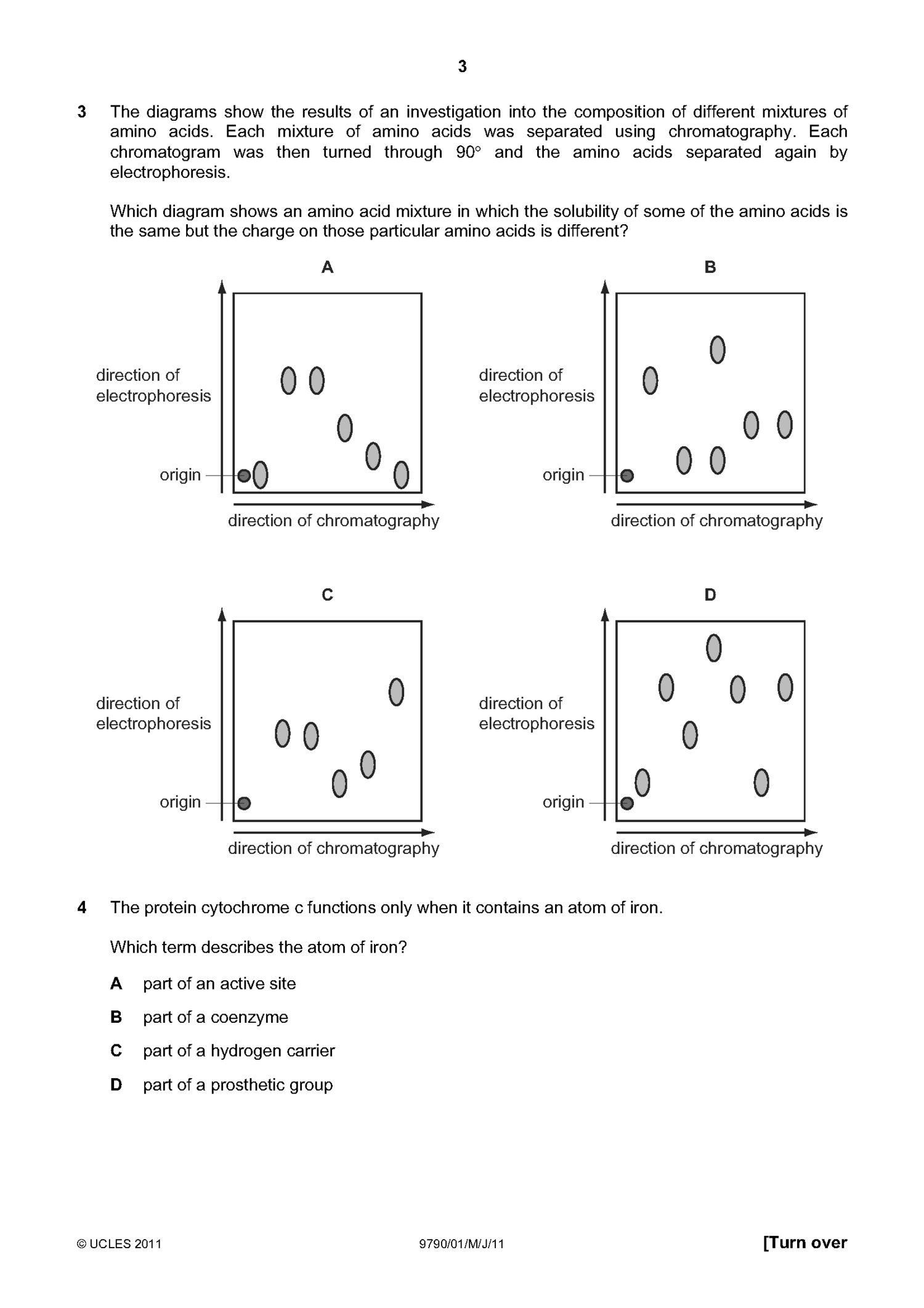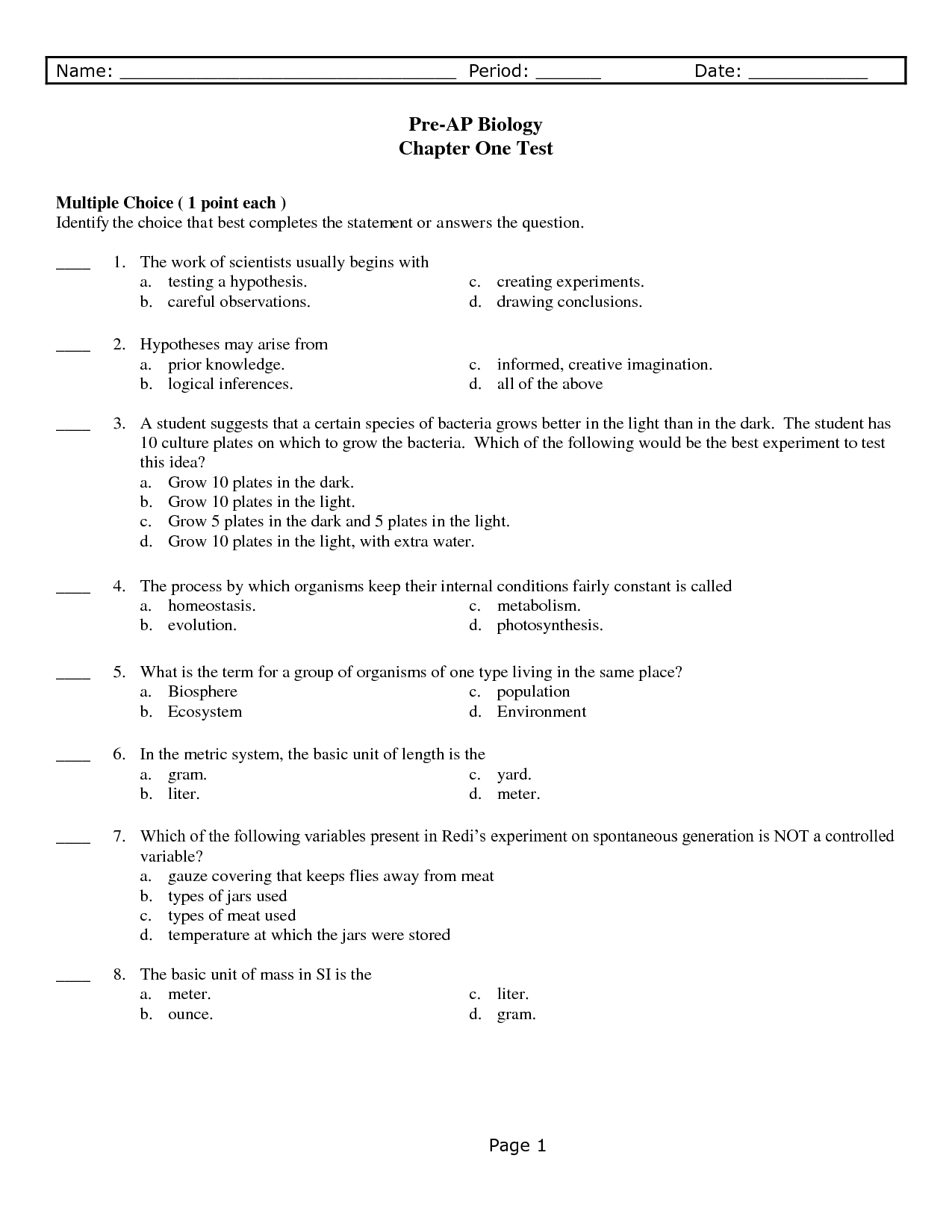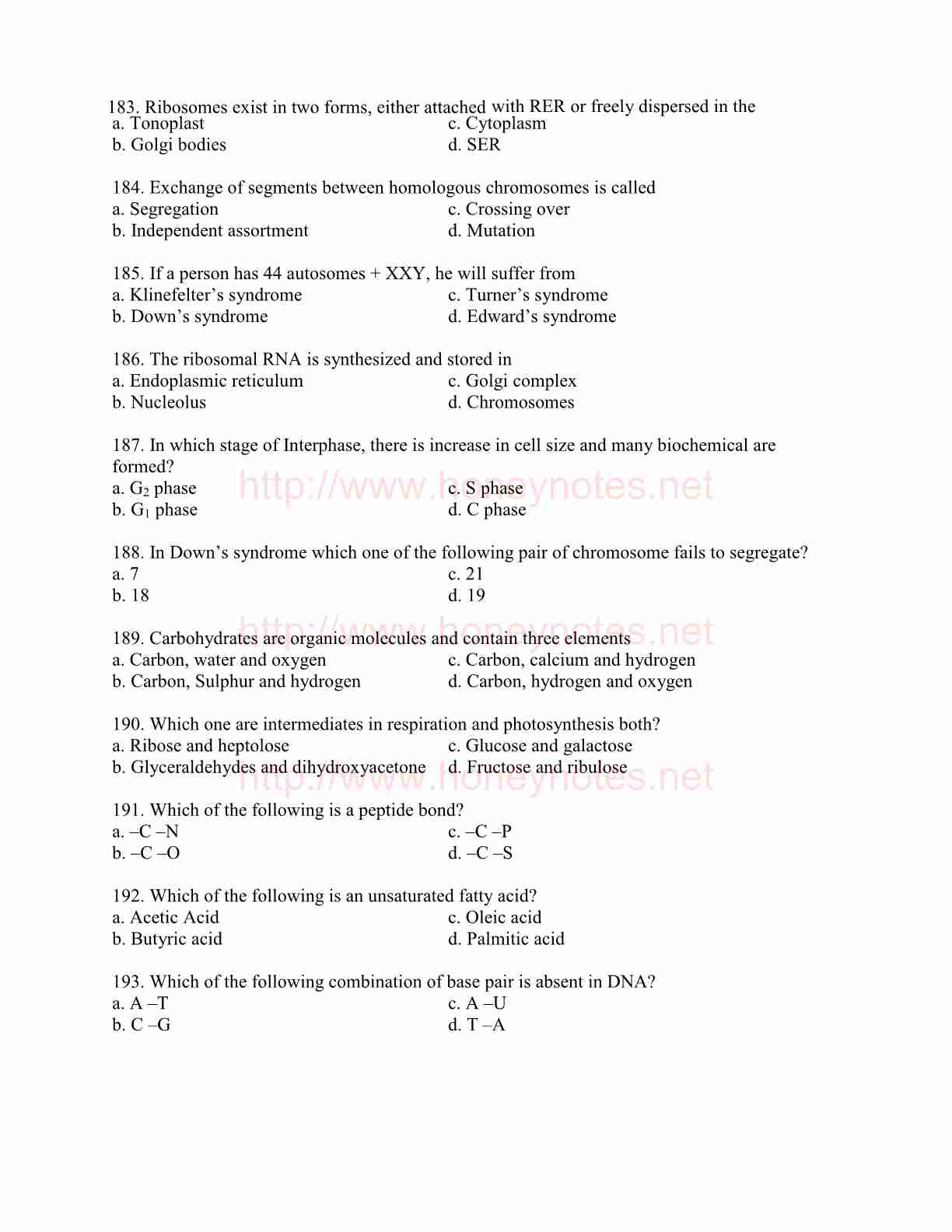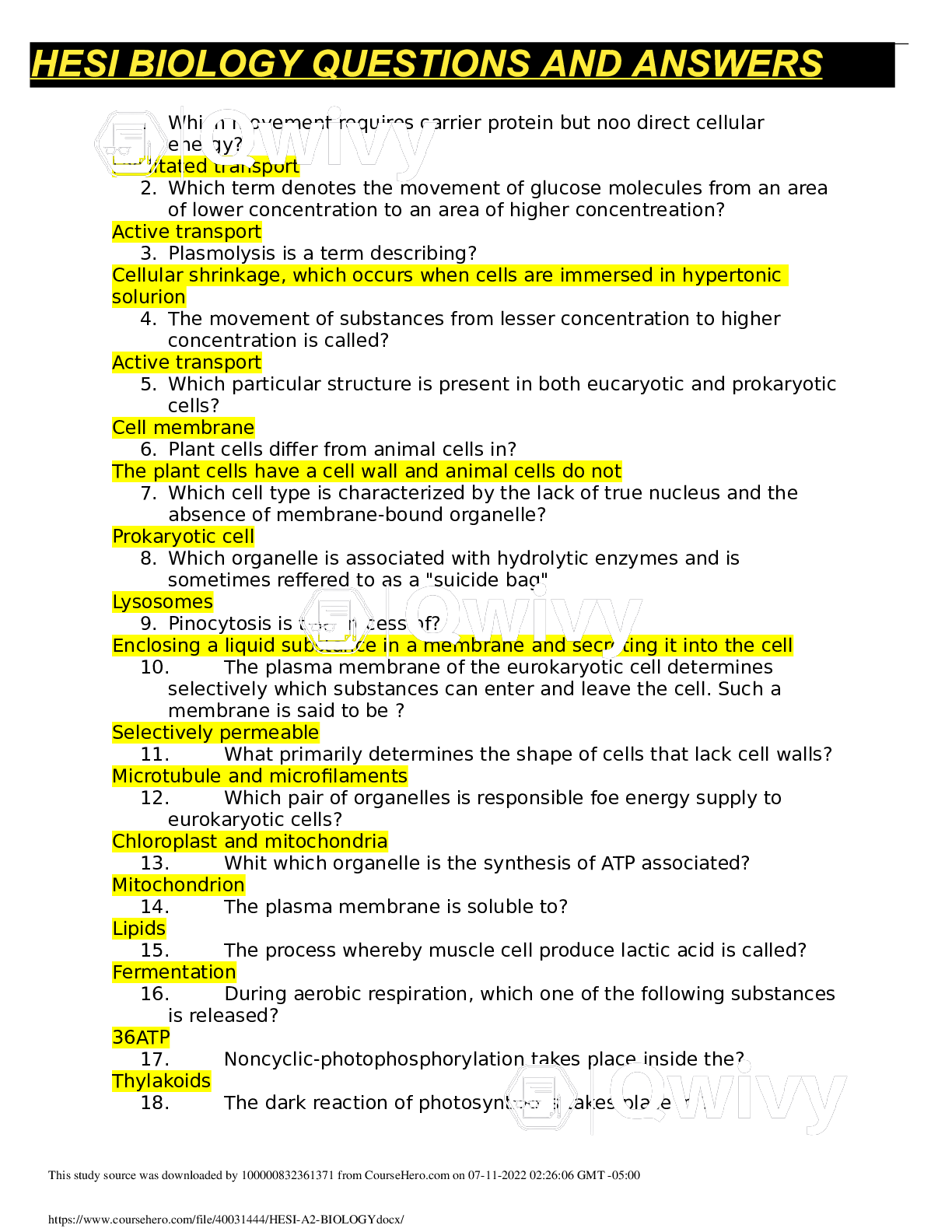
100 Quick Fire B1 Questions AQA GCSE Biology revision YouTube
1. What Is 'Brainfreeze?' Sphenopalatine ganglioneuralgia (or 'brain-freeze') is a painful condition similar to a migraine, that arises due to your bodys natural reaction to cold temperatures. When you get cold, your body undergoes a series of changes designed to prevent heat loss.

Old and difficult Multiple Choice Questions Alevel Biology — Online A level Biology Tutor
Stand Alone Question 1. During photosynthesis. A. light reactions produce sugar, while the Calvin cycle produces O2. B. light reactions produce NADPH and ATP, while the Calvin cycle produces sugar. C. light reactions photophosphorylate ADP, while the Calvin cycle produces ATP. D. the Calvin cycle produces both sugar and O2.

Old and difficult Multiple Choice Questions Alevel Biology — Online A level Biology Tutor
Blood acts as your body's transportation system—in one day, your blood travels nearly 12,000 miles (19,312 kilometers). Pumped along by your heart, blood takes oxygen from the air you breathe and nutrients from the food you eat to all the cells of your body. (Your heart pumps 1 million barrels of blood during your lifetime—enough to fill.

ICSE Class 10 Biology Question Paper Solution 2015 Download PDF
By Regina Bailey Updated on July 10, 2019 Biology is a wondrous science that inspires us to discover more about the world around us. While science may not have the answers to every question, some biology questions are answerable. Have you ever wondered why DNA is twisted or why some sounds make your skin crawl?

Challenging Multiple Choice questions for Alevel Biology great for OCR not easy ! — Online A
1. By what process to plants turn sunlight, water and carbon dioxide into food (and oxygen)? 2. What was the name of Charles Darwin's ship? 3. What is the largest living structure on Earth? 4. Bone marrow is the primary site of the production of what type of cell? 5. How many stomachs does a cow typically have? 6.

Old and difficult Multiple Choice Questions Alevel Biology — Online Alevel Biology Tutor
1. What is the biggest organ in the human body? A. Skin B. Heart C. Brain D. Lungs Correct Answer A. Skin Explanation The skin is the largest organ in the human body. It covers the entire body and has a surface area of about 20 square feet.

15 Best Images of Glencoe Biology Worksheets 7th Grade Science Worksheets, Glencoe Science
Hard Biology Questions And Answers Quiz Tags: Biology MCQs Quiz Test One word question answers in which short questions and interviews and Biological Viva is completed for the exams tests and interviews. NCERT Biological diagnostic test with solved MCQs quiz online.
GCSE Biology AQA Practice Papers Higher Pack 1 & 2 Bundle CGP Books
Free-Response Questions. Download free-response questions from past exams along with scoring guidelines, sample responses from exam takers, and scoring distributions. If you are using assistive technology and need help accessing these PDFs in another format, contact Services for Students with Disabilities at 212-713-8333 or by email at ssd@info.

Old and difficult Multiple Choice Questions Alevel Biology — Online A level Biology Tutor
Question: Human skin cells divide only once. Answer: Human skin cells divide between 50 and 70 times. Question: Iron is the most abundant metal in Earth's crust. Answer: Iron is the second most common metal in Earth's crust. Of the metals in the crust, only aluminum is more common. Question: Energy can be transmitted wirelessly.

AQA ALevel Biology revision questions (Years 1 and 2) Teaching Resources
Explain how an impulse passes along the membrane of a neuron. (8 marks) a. resting potential is -70mV - relatively negative inside in comparison to the outside. b. Na and K pumps maintain/re-establish the resting potential. c. more sodium ions outside than inside at resting potential - more potassium ions inside than outside.

Biology Sample Test Part A Multiple Choice (16) Identify the letter of the choice that best
1. Hydrolysis of peptide bonds; 2. Endopeptidases break polypeptides into smaller peptide chains; 3. Exopeptidases remove terminal amino acids; 4. Dipeptidases hydrolyse / break down dipeptides into amino acids. Describe how mRNA is produced in the cells nucleus.

(82) very important biology questions जीव विज्ञान के important questions for NEET YouTube
Questions Hansen's disease is more commonly known by which name? Botany is the study of what life form? What is the human body's largest organ? True or false: snails have teeth What part of the.

Biology Mcq With Answers Pdf wmclever
AP Biology is known for being one of the tougher AP exams, and, for most students, the free-response section is the hardest part of the test.In 2021, the average score for every free-response question was less than a 50%! However, knowing what to expect can make it easier to get a great score on AP Biology FRQ. And in this guide, we explain everything you need to know to ace this section.

Developmental Biology Exam Questions And Answers QUESTIONSG
What are the five senses of the human body? What chemicals can make human tissue regenerate in seconds? What is it about a full moon that makes people do crazy things and commit crimes? What is it about red that makes bulls so angry? When did humans stop evolving? When do birds use their teeth?

HESI A2 BIOLOGY Questions & Answers V1 & V2
Study with Quizlet and memorize flashcards containing terms like 3 Functions of membrane proteins:, How do vesicles move in a cell?, Over 4 billion years ago; both Chloroplast and Mitochondria were thought to be independent living prokaryotic organisms at one time because they have their own DNA and Ribosomes and can replicate themselves. Some larger organism engulfed them and started working.

Biology Quiz Q & A Worksheet Quickworksheets
In prokaryotes the polymerase is composed of four polypeptide subunits, two of which are identical. These subunits, denoted α α, α α, β β, and β β ', comprise the polymerase core enzyme. There is a fifth subunit that is involved in translation initiation. The polymerase comprised of all four subunits is called the holoenzyme.